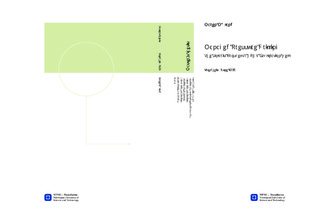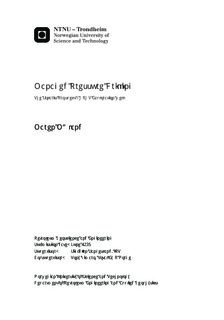| dc.contributor.advisor | Sangesland, Sigbjørn | nb_NO |
| dc.contributor.advisor | Zimaro, Tony | nb_NO |
| dc.contributor.author | Mæland, Maren | nb_NO |
| dc.date.accessioned | 2014-12-19T12:17:02Z | |
| dc.date.available | 2014-12-19T12:17:02Z | |
| dc.date.created | 2013-08-05 | nb_NO |
| dc.date.issued | 2013 | nb_NO |
| dc.identifier | 639064 | nb_NO |
| dc.identifier | ntnudaim:9192 | nb_NO |
| dc.identifier.uri | http://hdl.handle.net/11250/239995 | |
| dc.description.abstract | Managed Pressure Drilling is a drilling technique that evolves continuously. Complex drilling problems such as narrow mud-weight windows (narrow pressure margins), severe losses and deep water effects can be significantly reduced. The objectives of the MPD technology are to mitigate certain drilling challenges. Although this drilling technique has been proven to be efficient for several fields, proper candidate selection is essential. It is important to understand what MPD can accomplish as the technique do have associated risks that needs to be fully understood. Improper use of the technology leads to higher operational costs and possibly worsening of drilling issues.Total E&P Norway is planning to drill an ultra HPHT well (Solaris) in 2015 located in the Central Graben area, an area with several drilling challenges such as narrow pressure margins, uncertainties, high temperature and high pressure. The Solaris well is a challenging well with many similarities to the Mandarin well drilled by BG. The objective is to securely drill through a narrow mud-weight window to the target depth. The goal of this Master Thesis is to define MPD risks and benefits and summarize all findings for the Solaris exploration well. A literature survey on MPD experience with focus on HPHT wells with narrow mud-weight window similar to the Solaris well will be performed, an MPD system is proposed for the Solaris well and risks and benefits of using an MPD system has been closely examined.Based on current available information, literature review and simulation performed (comparing conventional drilling to MPD) it is likely that MPD is the better solution for the Solaris well. The well faces challenges such as a narrow mud-weight window and wellbore breathing issues, challenges that can be mitigated with MPD technology. As MPD do provide better control of the BHP pressure fluctuations are reduced. Target depth is more likely to be reached as the narrow pressure margins are drilled in a more controlled manner. Conventional drilling is possible for the Solaris well, however as uncertainty is present MPD do provide far better remedies and thereby increases the chance of reaching the target depth. Further evaluation should be done before deciding whether to use MPD or not. Complex and detailed simulations are one solution, trying to reduce the uncertainty level. | nb_NO |
| dc.language | eng | nb_NO |
| dc.publisher | Institutt for petroleumsteknologi og anvendt geofysikk | nb_NO |
| dc.title | Managed Pressure Drilling: The Solaris Prospect - HPHT Exploration well | nb_NO |
| dc.type | Master thesis | nb_NO |
| dc.source.pagenumber | 113 | nb_NO |
| dc.contributor.department | Norges teknisk-naturvitenskapelige universitet, Fakultet for ingeniørvitenskap og teknologi, Institutt for petroleumsteknologi og anvendt geofysikk | nb_NO |

